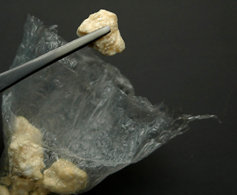The Basics Of Crack Cocaine Addiction

Crack cocaine is widely thought of as one of the most addictive drugs in existence. Crack is an even more addictive form of cocaine. It is produced by making a solution of cocaine, sodium bicarbonate, and water. The solution is boiled and a hard substance separates from the water. This substance is broken or cut into pieces called “rocks”, usually weighing one-tenth to one-half a gram. The Drug Enforcement Administration reports that crack rocks are generally from 75 to 90 percent pure cocaine.
Crack is typically smoked in glass pipes but can also be sprinkled or “laced” into marijuana cigarettes. When inhaled it is almost immediately absorbed into the bloodstream, with the maximum effects of the drug usually occurring around 2 minutes after inhalation. The effects last roughly thirty minutes after administration.
When Crack Started and Rising Trends
Crack exploded into use in America in the 80’s. This is mostly due to its cheap cost and quick high. The low cost explains why it is predominantly used in poor urban areas. The highest numbers of crack users are African-American males between the ages of 18 and 30 who come from low socioeconomic backgrounds.
Almost 4 percent of the American population today use crack. A recent report says that 8 million Americans from the age of 12 and older say that they have tried crack at some point in their lives. The same report, in 2002 indicated that the number was about 567,000.
Warning Signs
Crack has very definite signs of use almost immediately after use. They are so pronounced that you would not need to know the person to notice them. Some of the warning signs would be:
- Dilated pupils
- Increased body temperature
- High blood pressure
- Fast-talking or general hyperactivity displayed through actions
- Hoarse speech
When an addicted person stops using crack, there is a “crash.” They will experience withdrawal symptoms, which could include the following:
- Depression
- Anxiety
- Intense cravings for the drug
- Irritability
- Agitation
- Exhaustion
- Anger
You can also spot a crack user by certain paraphernalia. You might look for:
- Spoons with white residue or burn marks
- Small, thin Glass pipes with burns marks at one end, often with residue or scratches
- Small plastic bags, aluminum foil or pieces of plastic wrap, often with white residue
- Broken light bulbs with burn marks
Additionally, there may be emotional changes. Crack addicts might have one or more of the following:
- Inability to sleep
- Paranoia and agitation with no logical reason
- Shunting responsibility
- New friends who also use drugs
What To Do About it
An addict is highly unlikely to admit that they have a problem. If you suspect someone you know of crack addiction, the best thing to do is get them help. We have professionals that know the exact sequence of steps to get someone off of drugs. Please don’t hesitate to contact us.
Do not ignore the signs that someone is on crack. Only 10.4 percent of crack users get help. Crack is a very serious drug and can have extreme consequences if not handled quickly. It is vital that you act quickly when you have a friend or family member in need.
Sources:

 ®
®